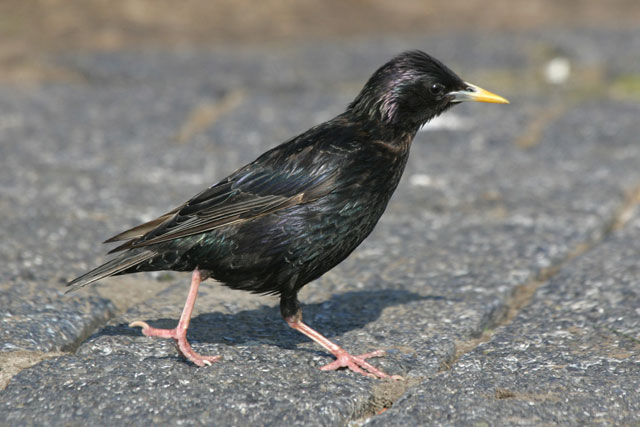

Both sexes regularly attacked intruders, which implies that the intruders inflicted some kind of cost on the owners. Here are seven of their uncommon looking relatives. However, the intrusion rates were higher when there were nestlings than during the incubation period, which suggests that collecting public information was also involved in the intruding behaviour. In Europe their English name is common starling. This finding supports the hypothesis that, in most cases, birds visited nests to obtain personal information about nesting resources. This result suggests that the presence of intruding males in the nests was affected by an increased opportunity to find vacancies in nesting territories as resident males became older. The proportion of the sexes among the intruders in each study year was correlated with the average age of male owners but not with the age of female owners. This is believed to release formic acid which repels ectoparasites. They also engage in a practice called 'anting,' in which they dab their bodies with caught ants, or with other acidic things such as vodka or vinegar. The average annual rate of intrusion of either sex was strongly correlated with the number of fledglings produced in the study colony the previous year, which seems to indicate that the inexperienced intruders were, in general, yearlings. Starlings are keen bathers, and love to spread their wings and go into what looks like a trance to sun bathe. The ratio of male‐to‐female intruders was higher among birds without previous breeding experience, although our results did not allow us to determine whether more inexperienced males or females intruded nests.

In a free‐ranging population of spotless starlings ( Sturnus unicolor), inexperienced birds were the predominant intruders. The adult Spotless Starling is larger than the Common Starling and has darker, oily-looking black plumage, which is entirely spotless in spring and summer, and only with very small pale spots in winter plumage. Synonyms edit (Sturnus unicolor): black starling, Mediterranean starling, Sardinian starling Translations edit ± show Sturnus unicolor References edit spotless starling on Wikipedia. Although the relationship between the sex, age and breeding experience of intruders and the sex and age of residents may be crucial for understanding the significance of nest‐prospecting behaviour, a precise determination of these traits has rarely been addressed in field studies. spotless starling ( plural spotless starlings ) Sturnus unicolor, a passerine bird in the starling family Sturnidae. The prospective behaviour for nests by conspecific intruders may be a strategy to gather public information for future reproduction or to secure resources for immediate reproduction. Green plants and feathers are commonly used as nest materials, with plants and feathers being carried to the nest by males and females respectively ( Polo and Veiga 2006 ). Polo, Vicente Arenas, Marta Sánchez, Sara Wright, J. The spotless starling is a medium-sized, hole-nesting passerine that mostly breeds in colonies ( Cramp 1998 ).

All these results taken together strongly support a role of sexual selection in the blue‐green coloration of spotless starling eggs.Intruders in Nests of the Spotless Starling: Prospecting for Public Information or for Immediate Nesting Resources? Intruders in Nests of the Spotless Starling: Prospecting for Public Information or for Immediate. Finally, we found a negative relationship between the effect of experimental food supply on nestling immunocompetence and the intensity of blue‐green coloration of eggs, suggesting that egg color predicts nutritional conditions that nestlings will experience during development. Second, blue‐green color intensity of artificial model eggs had a significant positive influence on paternal feeding effort. spotless starling (plural spotless starlings) Sturnus unicolor, a passerine bird in the starling family Sturnidae. First, experimental deterioration of female body condition (by means of wing feather removal) negatively affected the intensity of blue‐green egg coloration.

In this study, we use three different experimental approaches to explore the importance of sexual selection on blue‐green egg coloration of spotless starling ( Sturnus unicolor) eggs. Blue‐green color intensity would reflect the physiological condition of females, and hence it might also affect the allocation of male parental care. It has been recently proposed that the blue‐green coloration in eggs of many avian species may constitute a sexually selected female signal.


 0 kommentar(er)
0 kommentar(er)
